How to increase the power of a gas burner and improve the flame on the stove: a review of popular methods
Cooking, unfortunately, takes a lot of effort and time.Often, the duration of cooking depends not so much on the complexity of the dish, but on the power of the gas stove: with a nominally weak technique, everything takes longer to cook and fry. Finding ways to increase the power of a gas burner is so relevant because spending a free evening on yourself is much more pleasant than standing at the stove.
But are these modernization methods really safe? And are gas games worth the time savings? We will consider these pressing issues in detail in this material, providing it with visual photos and useful videos.
The content of the article:
Briefly about the power of the burners and stove
The total power of the working surface depends on the number of burners and their direct power, indicated in the equipment passport. The average for one burner is 2-2.5 kW. With decent gas quality and normal pressure in the line, this value is quite enough for comfortable and relatively quick heat treatment of products. In this case, the maximum power of the burner is determined when the regulator is turned to the maximum and gas is fully supplied.
Manufacturers often offer household hobs, the burners of which have different power ratings:
- on small — 0.7-1.2 kW;
- on average — 1.3-1.8 kW;
- on large - up to 4 kW and more.
Such a technological solution is quite logical and convenient: it makes no sense to brew coffee in a Turk on a powerful WOK burner or try to boil a large volume of water on a small one. The choice of different powers allows you to save gas, and if the room temperature is maintained using air conditioner, then save energy.
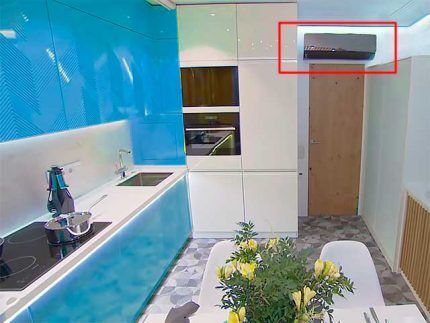
Thus, the acceptable parameters for the calorific value of the gas used by a hob from the middle price segment, consisting of 4 burners, is 8-10 kW. More budget models usually have a total power of 5-7 kW.
Cooking surfaces with a high calorific value for normal safe operation may require the installation of a separate chimney or the installation of a heavy-duty hood. However, for home use, purchasing such models is not always advisable.
Gas stoves with two- and three-circuit burners are especially popular. The so-called double or triple “crown” is a powerful burner in which the flame is produced not in one row, but in several circles. This device allows you to cook faster and heat dishes more evenly.
Gas stove burner design
To understand how you can increase the flame in a household gas stove, it is worth familiarizing yourself with the structure of the burner itself, the principle of gas supply and combustion.
The first thing worth remembering once and for all: what burns in the stove is not just pure gas, but a gas-air mixture.It is its final composition, the ratio of gas and air, that largely determines the size and efficiency of the fire that the consumer receives from the burner.

Burners in burners, depending on the method of air intake, are of three types:
- Diffusion usually used in ovens. There is no air leakage in such structures; mixing with gas occurs naturally.
- Kinetic Burners use line pressure to capture the right amount of air to create the right fuel mixture.
- Combined burners successfully use both methods of adding air to gas. These are the devices used in most household gas stoves.
The design of the burner itself has a simple, but precisely calibrated configuration.
The pipeline ends at a tip into which a nozzle is mounted. Its passage hole has a certain calculated diameter. It is through this that gas is supplied to the mixer, in which fuel is mixed with air. From the mixer, the flammable composition enters the burner, in which a flame is produced.
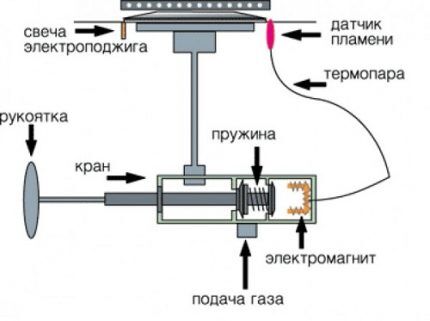
It is worth paying attention to the area between the jet and the mixer. While the gas travels this distance, exactly the amount of air that is necessary to obtain the optimal combination of fuel and oxygen is mixed into it.This distance is also strictly calculated, so that the gas burns completely and with the highest possible efficiency.
Ways to increase the power of a burner
Based on the design features of the burner, several methods of increasing the power of the stove are popular. But is it appropriate to test them on your own experience?
It is worth recalling that even independent repair of gas appliances is prohibited, and even modifying equipment at home is an undertaking bordering on dangerous and even deadly sabotage.
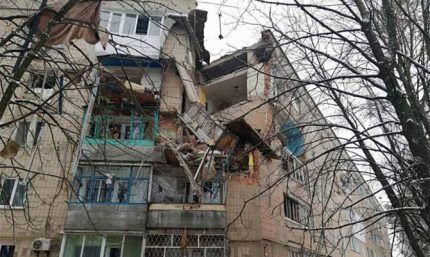
Unfortunately, explosions and carbon monoxide poisoning are those tragedies that shock the public with the frequency and number of victims. Therefore, it is definitely not worth altering the design of the burner for the sake of your own convenience. And the methods described below are more useful for understanding theory than for practical application.
Method #1 - boring or replacing the jet
The nozzle through hole is one of the main regulators of the gas volume, which gradually enters the burner. To increase the power of the burner, you need to carefully bore the nozzle or replace it with a part with a wider feed hole.
For boring, you can use a sharp knitting needle with a diameter of up to 3 mm. But you shouldn’t get too carried away - uncontrolled enlargement of the hole or replacement of the nozzle is fraught with extremely unpleasant consequences.
It is impossible to increase the gas flow without miscalculations, since the burner itself must be able to process it. Excess gas will cause the flame to pull away from the burner.The fire will change color to red, soot will appear, which is almost impossible to remove from the dishes. The problem can be solved by installing a larger diameter burner.

However, replacing the burner is not always possible due to the design of the stove body itself. Even if you actually replace the burner, the new volume of gas transmitted through the nozzle may not be enough. This threatens even bigger problems: the flame can jump down and burn out near the nozzle itself.
But a sluggish flame and soot in this case are the lesser of evils. A falling flame indicates incomplete combustion of the gas, which releases combustion products dangerous to life and health - soot and carbon dioxide.
Method #2 - reducing the jet-mixer length
Fortunately, this method is less popular among tips on how to try to increase the power of a gas stove. This method is more dangerous than the previous one, as it involves even more interference in the design of the burner, is less effective and can also lead to negative consequences.
The size of the area that is emphasized in the description of the burner design also affects the power of the produced flame. If you reduce this zone, gas will flow into the burner faster and the burner power will increase slightly.
However, the portion of air required for normal combustion simply will not have time to be added to the incoming gas. As a result, the modernizer will receive the same red flame with soot, which is likely to come off the burner.
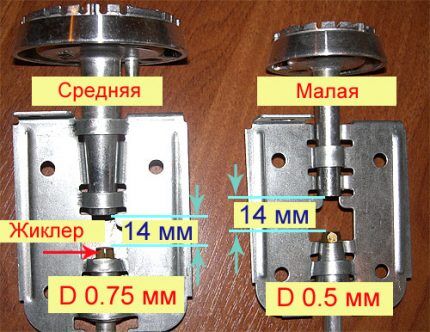
Method #3 - removing the divider
You can try to increase the burner power without affecting the operation of the nozzle. The divider covering the burner evenly divides the flow of the gas-air mixture, distributing the flame into separate bundles. Removing the divider increases the area of contact between the flame and the cookware. The column of fire becomes higher and larger, and the heat treatment itself proceeds faster.
However, this is only a temporary measure and is not suitable for every pan. For this kind of cooking, you need to use tall cauldrons or special WOK pans. Additionally, a fire uncontrolled by a cutter becomes quite dangerous.
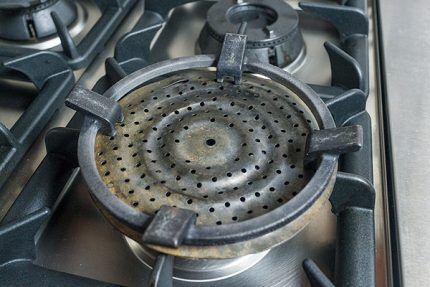
Method #4 - increasing gas pressure
The pressurization method is only suitable for slabs connected to gas cylinders. The standard pressure in a cylinder for domestic use is about 1.6 MPa. But this value is not constant: the force of gas pressure on the walls of the vessel can be influenced by both the degree of filling of the cylinder itself and the temperature in the room, the composition of the gas, etc.
The higher the temperature of the gas, the more it expands, pressing on the walls of the container. Therefore, the cylinders are not filled completely, but approximately 85%. And, the less gas remains in the vessel, the weaker its flow flowing to the burner.
You can try to increase the pressure of the gas entering the stove using gearbox, the so-called “frog”.It is unsafe to damage the design of the unit, and, fortunately, most modern gearboxes are non-separable. However, replacing the part may solve the problem. Supplying gas with increased pressure will provoke more air leaks, due to which the flame on the burner will increase significantly.
But do not forget about safety precautions and monitor the gas supply even when the burner control is closed. Too high a pressure can cause gas leakage even when the burners are not turned on.
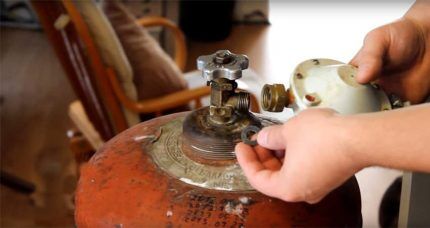
Based on all of the above, you can understand that when choosing one of the ways to increase power, you should be extremely careful and not overdo it.
The only safe and affordable way to increase the power of your burners is to buy a new hob or stove. It is necessary to initially select gas equipment that meets the needs of the family. Any attempts to change the passport parameters of burners by an inexperienced technician at home will inevitably lead to serious problems.
Why does the burner burn poorly?
If, according to the passport, the burner has more power, but in fact does not produce the required volume of flame, it is worth looking for possible reasons for the decrease in the efficiency of the equipment.
The most common reasons for poor combustion are the following:
- line pressure too low;
- the air-gas mixture enters the burner in insufficient volume;
- the holes in the crown or jet are clogged with combustion products;
- the design of the burner is damaged or the gas hose itself is damaged;
- the burner does not match the installed burner.
The last option is rather an exception to the rule, since all hobs are thoroughly tested at the manufacturing plants. Equipment diagnostics and repairs must be carried out exclusively by a certified technician. gas service.
Another reason for the burners not working properly could be an unsuitable jet. Many gas stoves come with two types of these nozzles, each of which is suitable for a specific type of gas: bottled or mains.
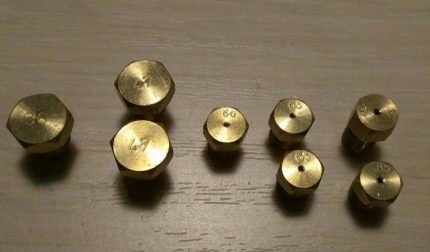
The gas pressure in the cylinder is significantly higher than in the pipeline, so nozzles with a narrower opening are used to connect the stove.
It is possible that during installation connecting the stove the centralized gas supply pipe was not replaced with nozzles of the required type, so the burner does not work correctly.
Adjusting the flame on the stove burners
It is necessary to debug the normal operation of the burner in cases where the flame loses its efficiency and quality. Setting up a gas stove should also be done by a specialist. But understanding the algorithm of this process will be useful for any user.
First, it’s worth understanding what a properly burning stove flame looks like. The fire should be blue. An intense bright blue glow is a sure sign that the stove is working correctly and does not need debugging. A yellow, orange or red flame indicates an incorrect composition of the combustible mixture.In this case, there is clearly not enough air; its flow must be increased.
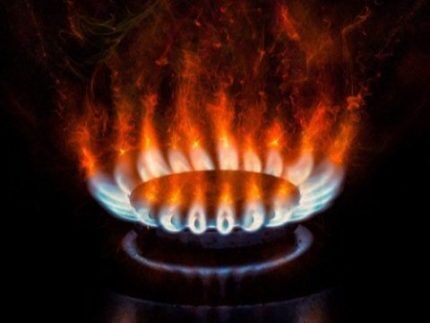
To change the gas-air mixture entering the burner, it is necessary to adjust the operation of the air dampers, which are usually located near each burner.
Direct setup goes like this:
- after disconnecting the stove from the gas system, it is necessary to gain access to the adjustment mechanisms under a special partition or in the gas control knob;
- the stove is reconnected to the main line, gas is supplied alternately to each burner;
- the volume of air entering the mixer is adjusted by turning a special screw;
- As soon as the flame in each burner acquires the correct color, you can turn off the stove again, reassemble it and connect it to the main line.
When setting up the stove, it may be necessary to work with the gas control valve and its thermocouple. If the flame regularly goes out at a minimum fuel supply level, perhaps the problem lies in the gas control. The operating principle of this option is based on a special sensor that responds to the energy released during the combustion process. If the flame goes out unexpectedly, the thermocouple sensor cools down, signaling the gas supply to stop.
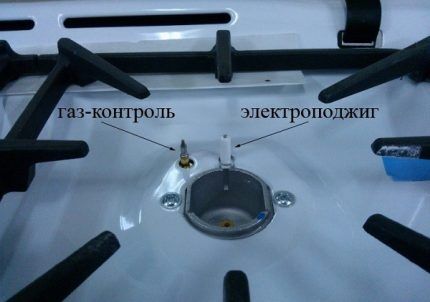
However, oxidation processes and a decrease in the sensitivity of the sensor due to the ingress of liquids or the formation of deposits from food deposits can provoke incorrect gas shutoff outside of an emergency situation. Therefore, both the stove and this block should be kept clean, and if necessary, call a professional to clean it.
If you encounter unusually noisy operation of the burner, we recommend that you find out the cause of the hob noise and ways to eliminate it.
Conclusions and useful video on the topic
The operation of a burner without a divider and the potential size of the flame when cooking directly from the burner is presented in the following video:
An example of the operation of jets for bottled gas in a hob connected to the main gas pipeline is clearly shown in the following video. After replacing the injectors, the flame becomes almost perfect:
Interfering with the design of a gas burner is an unacceptable and risky idea. Residents of apartment buildings must be especially responsible, because in the event of an accident, not only their own lives are at stake, but also the fates of all neighbors. Approach the choice of equipment seriously, calculating in advance the power of the equipment necessary for comfort, so that after purchase there is no need for dangerous and unjustified modification.
Would you like to share your experience of increasing the power of the burner? Tell us about it in the comments block, join the discussion - we and our readers are interested in your opinion.
If you still have questions, do not hesitate to ask our experts and other site visitors - the feedback block is located below the article.




You correctly warn about the danger.The average person does not need to go further into the gas stove than cleaning the burner from combustion products and pieces of food. The danger is not illusory.